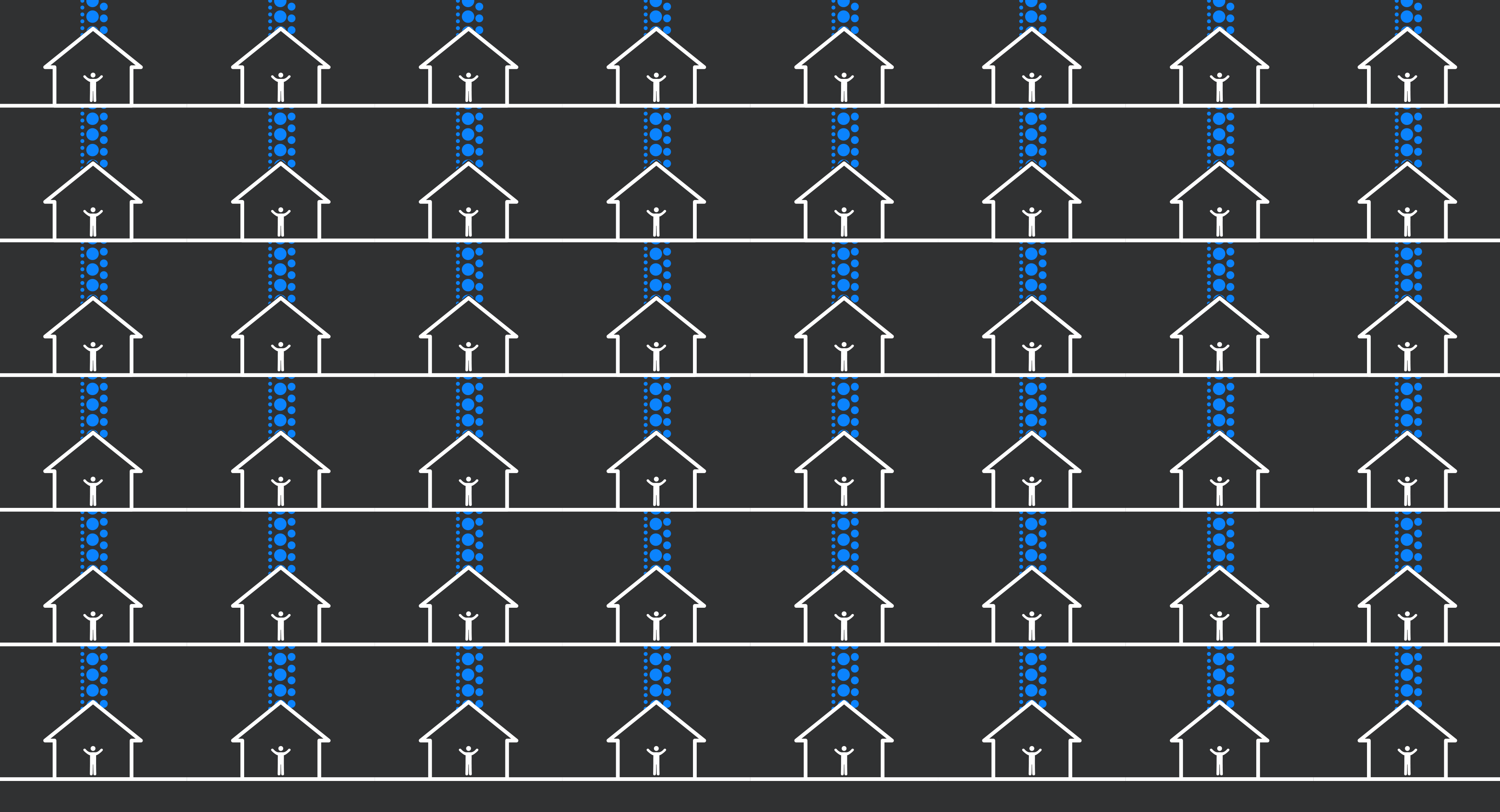We use cookies (or similar technologies) to collect information about how you interact with our website and allow us to remember you. We use this to improve your experience and for analytics about who our visitors are. To learn more, see our Privacy policy
Our digital neighborhood has no boundaries
Neighborhood watch across our digital neighborhood is the future of smart device security.
The idea of a neighborhood watch is simple: keep an eye out for crime in your neighborhood, even if it doesn’t impact you, and report it. For many of a certain age, the neighborhood watch movement was one of those mythical childhood tenets—like how to survive quicksand, it seemed it was to be a pivotal cornerstone of life. There were street signs, breakfast TV commercials, moms looking out from behind curtains… as an adult, your mileage may have varied.
The halcyon mid-century vision of tight-knit communities, the size and sensibility of neighborhoods, and advancements in technology have all changed radically since the inception of neighborhood watch 50 years ago. Societal shifts also have certainly diminished the efficacy of the movement from its original intentions.
At its essence, though, neighborhood watch depends on fundamental principles that represent an optimal, future-proof security model: crowd-sourced, always-on information sharing.

Crime ain’t what it used to be
In theory, neighborhood watch was able to observe and report a majority of local crimes. Problems like break-ins and petty theft could all be witnessed and reported. Today, similar crimes can be reliably caught on smart home security cameras and cameras in businesses or in public.
Smart devices have greatly improved home security. Specifically, they have given us unprecedented levels of evidence - their ability to witness anything at any time, accurately, and with perfect recall goes far beyond that of human potential. Smart devices have no bystander effect, no time off, and no hazy memories. They’re a modern, infallible neighborhood watch. Or are they…
With the rise of the Internet of Things (IoT), our homes have become smart homes. We have multiple devices connected to our Wi-Fi and communicating with the cloud, making our lives easier, doing menial tasks, creating convenience, and streamlining chores. We have entertainment at the touch of a button, fitness gadgets, phones, tablets, laptops, consoles, smart doorbells, smart locks, and smart alarm systems.
All of these devices monitor our lives. They monitor our heartbeats, our viewing habits, and the temperature of our bedrooms. Our smart doorbell cameras turn on every time we leave or enter our homes. These devices are always on, endlessly collecting data, endlessly watching.
Who watches the watchmen?
The smart home has a weakness: device security.
Smart security might be able to outperform a keen neighborhood watch community back in the day when it comes to local crime. But today, threat actors can access your home from halfway around the world. Remote device access can’t be caught on camera or by the human eye. Your identity stolen, your data collected, your keystrokes logged, your daily life uploaded, unencrypted, into the unknown—none of it can be seen.
Silent, invisible, but not entirely undetectable.
The magnitude of the digital neighborhood
Today we all live in two neighborhoods: our close, physical neighborhood; our eyes and ears neighborhood watch neighborhood, and our digital neighborhood; our global, interconnected, populated by billions, invisible device network.
Our digital neighborhood has no boundaries. To hold a device is to be connected with Italy and Egypt and New Zealand all at once. There has been no precedent for this, no cultural standards to navigate. We’re all just here, singularly, digitally, all together, in this little earth-sized neighborhood.
And still, those fundamentals of neighborhood watch, crowd-sourced, always-on information sharing, are our best bet for security.
Smart neighborhood watch
We believe that the most successful security system for the smart home is crowd-sourced, always-on information.
Preventative security measures will likely never be as dynamic or future-proof as a security model based on communication monitoring. Preventative security, like firewalls, is a static defense. Useful, but any static defense can be circumvented - it can be learned and dismantled or negated or scaled. With today’s pace of technological development, static security defenses require constant updates to maintain viability and battle obsolescence.
Information monitoring, specifically using AI to develop and update 1,000s (or 100,000s) of crowdsourced and anonymous device communication profiles, is evergreen. Instead of fighting an evolving enemy, information monitoring can instantly identify device intrusion or misbehavior from pattern abnormality. This emphasis on detection, on proactively witnessing, reporting, and blocking criminal activity, can alert and protect the homeowner to any smart device corruption, anywhere, at any time.
Anonymized information sharing becomes stronger with every individual (every neighbor) who participates: the more devices monitored, the more granular the device profiles, the more precise anomaly detection becomes.
In this global neighborhood, just like a small town 50 years ago, my security is your security and your security is my security.